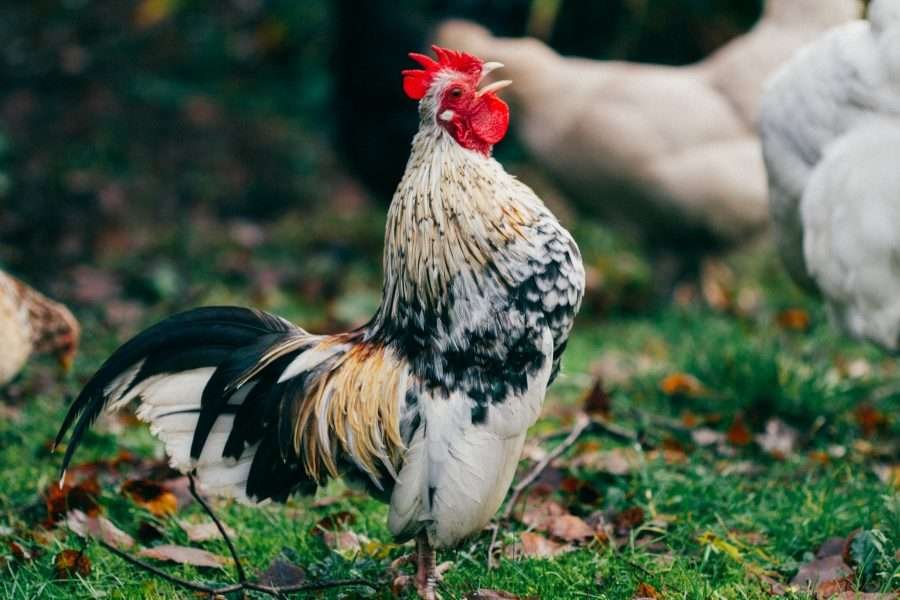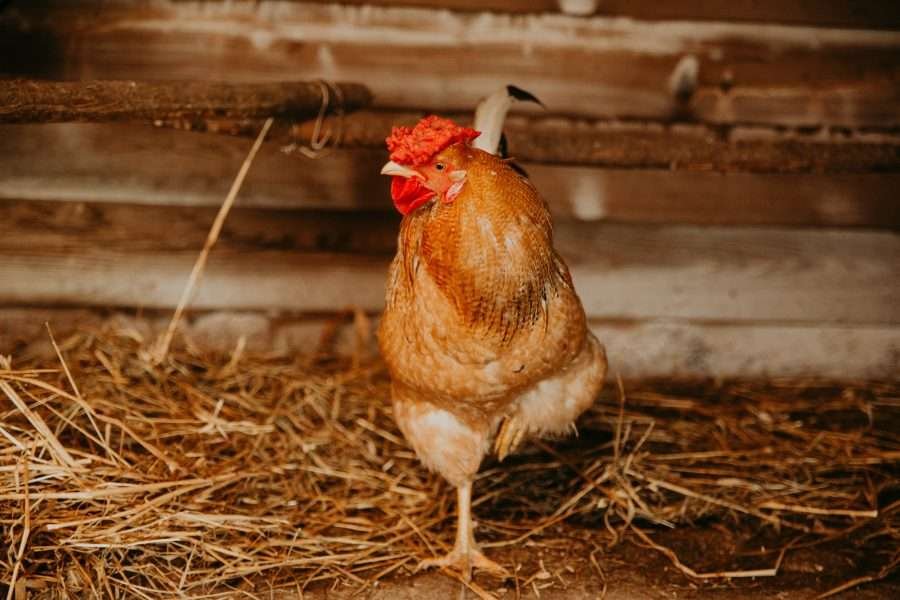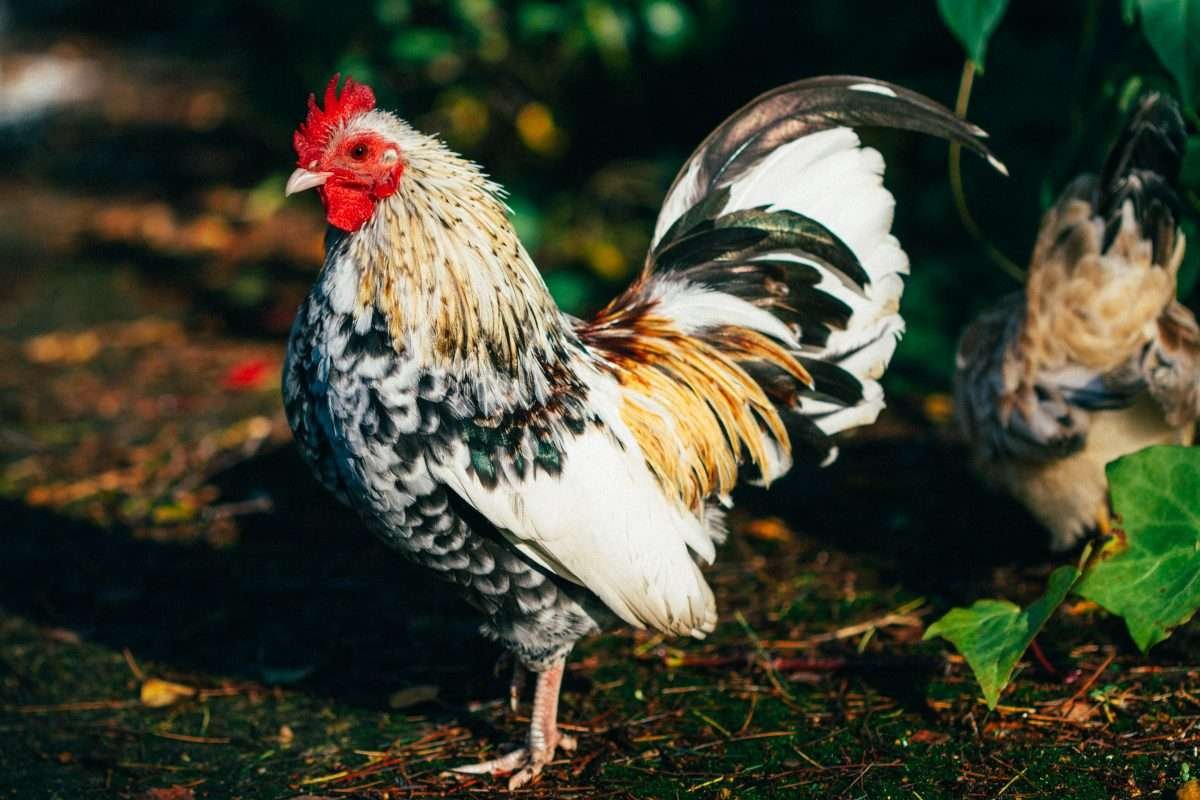Wanting a tiny chicken with loads of personality? It’s hard to go past the Serama chicken as a compact little chicken which has it all. Its a true bantam with loads of personality that is suitable for families with children.

The Serama chicken may be tiny but they make up for it in their personality. This little Malaysian breed is a happy and vibrant chicken that does well in warm weather.
Our comprehensive and detailed overview of this breed will inform you of the characteristics of the Serama chicken and enable you to decide whether they are the perfect addition to your flock.
What this article covers
This is a long article, so below are some quick links. Click any of them to go straight to that section – or just carry on reading for the full guide!
Overview of Serama chicken characteristics
Pros and Cons of keeping a Serama chicken
A Little History of the Serama chicken
The Personality of a Serama chicken
What do Serama Chickens look like?
Egg Laying Characteristics of a Serama Chicken
Health Considerations for a Serama Chicken
Shopping list of items needed to look after a Serama chicken
Overview of Serama chicken characteristics
| Lifespan | 7+ years |
| Weight | < 19 oz or 500g |
| Color | White, black, orange and more |
| Egg Production | 4-5 per week. |
| Egg Color | White, brown |
| Broody | Not overly |
| Noisy | No |
| Suitable for hot environments | Yes |
| Suitable for cold environments | No |
| Suitable for wet environments | Yes |
| Child friendly | Yes |
| Cost of Chicken | Check Price here |
Pros and Cons of keeping a Serama chicken
| Pros 👍 | Cons 👎 |
| ✔ Friendly | ❌ Small eggs |
| ✔ Suitable for families with children | ❌ Not suitable for cold weather |
| ✔ Suitable for small spaces | ❌ Can be expensive to buy |
| ✔ Resilient and hardy | |
| ✔ Great egg layer | |
| ✔ Not overly broody |
A Little History of the Serama chicken
In the 1970s small breeds of chicken like the Japanese and Malaysian bantams were combined to create what is known today as the Serama chicken.
The modern breed is attributed to the efforts of Wee Yean Een from Kelantan He supposedly named the breed after the Thai king, Raja Sri Rama, who, like these little birds, was renowned for his majestic appearance and proud carriage.
The breed was first exhibited in 1990.
The breed was hit hard by the Asian bird flu epidemic in 2004 when many birds were culled amid government concerns.
Serama chickens began to be imported into the United States and United Kingdom in 2004 where they gained recognition by official clubs and poultry associations several years later.
The Personality of a Serama Chicken
Seramas stand tall and proud.
Seramas have an assertive and confident stance, but are calm and easy to handle. They like to shake their wings and walk with confidently and with pride. They pull their head back to reveal a large puffed out chest.
Serama chickens are friendly and make great family pets.
Their small size means they can be kept in small spaces easily. You don’t need a lot of backyard space or a large coop for this breed. Smaller coops are perfectly fine.
They are not noisy but love to have a chat amongst themselves. The cockerel’s crow is much quieter than that of a larger breed.
They love to be active and flit around their coop or run.

What do Serama Chickens look like?
Seramas are tiny chickens that are only 6-10 inches tall. In fact, they are known as the smallest chickens in the world! They are true bantam chickens.
Seramas generally weigh under 19 oz or 500g. There is even have a class of Serama chickens called ‘Micros’ which can weight under 8oz or 200g!
Serama chickens stand upright with their chests pushed out and their heads held high. The back of the bird is very short. Their tail feathers often sit higher than their head.
Their wings are long and should almost touch the ground at the side when held up. They have strong and muscled shoulders that are set high to support their wings.
Their head is tiny and they have a single comb with red earlobes. Their eyes are a red color and their beak is short. Legs are muscular with yellow or white shanks.
They generally come in the color black, white and orange.

Cooping a Serama Chicken
One of the best things about keeping small breeds like the Serama chicken is that you don’t need a large coop or run for them due to their size.
It’s better to build or buy a coop that you can go high with rather than wide. As they are bantams they are good at flying so a coop or run with height will allow them to practice this natural tendency they have to stretch their wings and fly.
Each Serama chicken should have around 2 square feet of coop space inside the coop. This will give them enough room to move around and not be living on top of each other and get bullied.
Their perches should allow for six inches of space per chicken.
It’s a good idea to install many perches within a coop area to give choice about who sits where.
Three hens can share one nesting box and this is adequate. Feel free to install more for additional comfort and moving space if the layout of the coop permits.
Like many other chicken breeds, Serama chickens love to forage around for bugs and seeds.
Let them free range but keep an eye on them due to predators. Because of their size their list of predators is larger than that of a standard sized chicken.
Give them at least 4 square feet of outside space to move around and forage.

Serama Chicken Nutrition
You should feed Serama chickens high quality feed.
Chicks should be fed a 20% crumble until they are 16 weeks old. Then they can be fed a 16% layer feed of crumbles or pellets when they mature. We like this crumble feed for our Seramas and other small breeds. We prefer to continue to use a crumble feed as its easier for their small beaks to pick up.
Always provide a bowl of high quality grit to aid their digestion.
Always provide a waterer with clean water they can drink and that they cannot accidentally drown in.
Egg Laying Characteristics of a Serama Chicken
Due to their size, Serama chicken eggs are tiny like the chickens themselves!
Five Serama eggs are comparable in quantity to one standard chicken egg.
Serama hens generally lay around four of these very small eggs a week (200-250 per year).
Egg colors range from white to dark brown.
They are early to mature so they will start to lay at 16-18 weeks.
Seramas are year round layers and hens can make doting and reliable mothers.

Health Considerations for a Serama Chicken
The Serama seems to have a diverse gene pool and tend to be a healthy breed of chicken.
There is a lethal gene inherited from the Japanese bantams that Seramas were originally bred from and some Seramas continue to carry this gene today.
This can cause approximately 2% of the chicks to die in the shell during their development. This is due to their bones and muscles not developing properly and becomes a form of dwarfism.
It’s best to check with the breeder when purchasing this chicken regarding the gene, especially if you plan to breed your chickens.
In general, Serama chickens can be susceptible to lice and mites just like other breeds of chicken. This can be solved by providing them with dusting material or treating them with an insecticide.
Serama chickens will also molt their feathers all year round so don’t be alarmed with this, its typical for their breed.
Lastly, ensure they are kept warm. They originate from Malaysia where it is warm all year around so these chickens do not do well in very cold weather where there is snow and frost.
Serama Chickens For Sale
Cackle Hatchery supplies and delivers over 200 varieties of chicken breeds. Check out current supplies and prices here.


